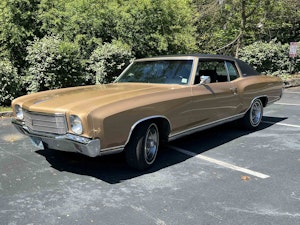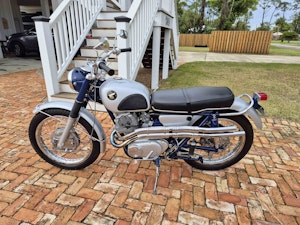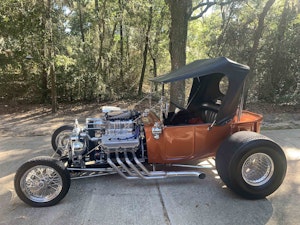Media | Articles
Audi’s A6 e-tron Is a Slippery, People-Hauling EV

How the e-tron has changed since the first concept bearing the name. In 2009, Audi tried to market a battery-electric driveline based on fun. (So did Mercedes.) The blood-orange concept it showed in Frankfurt looked a lot like the company’s mid-engine halo car, the R8. The latest e-tron model, the A6, has an entirely different mission.
(Note: Audi hasn’t fully revealed the U.S.-market A6, so all the photos depict the European-market car.)



As the first “low floor” vehicle on Audi’s relatively new PPE platform, this sedan is targeted not only at fleets but at individuals who will use it to commute, pick up the kids from school, go on vacation—in short, normal, boring life.
A quick refresher on Audi’s naming system: For most of the 2000s, the sedans have all been given an alphanumeric designation beginning with A, for the base models, or S, for the sporty ones, or RS, for the really sporty ones, followed by a number, which corresponds to size. SUVs replace the A with a Q. They also get an S when they’re sporty and an RS when they’re really sporty, but those extra letters precede the Q. (Your humble author finds this appendix stupid and prefers to pronounce the alphanumerics as a word: S Q8 becomes Squait.)

Late in 2023, someone realized that the word “even” started with the letters E and V—as in “electric vehicle.” It wasn’t enough for Audi to keep the existing nomenclature system and, for the EVs, simply add an “e-tron” after the alphanumerics; they must denote different vehicles. So, the battery-electrics would get even numbers (plus “e-tron”), the gas vehicles odds. A would still mean a sedan, Q an SUV, and the S and RS business denoted the performance hierarchy.
Marketplace
Buy and sell classics with confidence

Pop quiz! What sort of vehicle is the Audi A6 e-tron Sportback?
The A and the 6 tell us it’s a sedan of middling size and moderate power—that’s electric power, because 6 is even, and also, e-tron. (Bonus points if you know that Sportback means it has a rear hatch, rather than a traditional trunk, which hinges at the top of the rear glass, not the bottom.) Audi has introduced the whole “6” line at once: the base sedan, the base wagon, the sporty sedan, and the sporty wagon. The U.S., unfortunately, doesn’t get either wagon.
The gas-powered A6 and S6 will now become the A7 and S7.
It’s easy to look at the almost-hatchback-but-not silhouette of the new Audi and think of the Taycan, the electric mid-sizer built by Porsche, a company that, like Audi, is owned by the Volkswagen Auto Group (VAG). Though the Taycan does have an Audi sibling, it isn’t this car. It’s the e-tron GT, which rides on the J1 platform. The A6, like the Q6, is on the Premium Platform Electric (PPE). This platform “scales the high-end performance of the J1 platform and cover[s] a broad range of customer segments.” Charge speed, range, battery gross capacity, and voltage level for the PPE are all as good as or better than those of the J1 platform, and the PPE is far more scalable.
In theory, Audi could use the PPE to build an e-tron GT that actually looked different from the Taycan but was just as fast. But that wasn’t the mission blessed by VAG, which wanted a practical, volume-selling EV that it could market to fleets (ex. European taxis) and young families. Compare the proportions of the A6 to those of the e-tron GT, and the divergence is clear: With a longer, taller, and wider cabin, the A6 is far more practical as an everyday vehicle—it can haul more stuff and more people in greater comfort. It’s basically the same size as its gas-powered predecessor, though slightly wider.


Also, the four rings on the rear light up—how cool is that?

The new interior follows the industry-wide trend of More Screen. Gone is the binnacle over the digital instrument cluster, and the chunky shift lever on the center console. Instead, a blade-like screen sweeps behind the steering wheel across the dash, stopping to the right of the center console. A smaller, separate screen sits on the dash in front of the passenger. The lines are predominately horizontal and gently geometric. The shifter is now a row of buttons on the console. The raft of buttons on the driver’s side door is intimidating; will they be easy to identify and operate when on the move? They’re even further from the line of sight than the haptic steering wheel controls . . .

The interior is copy-paste from the sedan’s crossover predecessor and platform mate, the Q6 e-tron (a.k.a. Kwixtron). Below is the U.S. version, without the fancy camera mirrors and their displays.

The silhouette of the snub-nosed, low-slung A6 helps maximize the range of the 100-kWh battery pack. Drag coefficient for the European model, with its skinny camera mirrors exclusive to that market, is a seal-like .21. If hooked up to a DC fast charger, the 800V architecture means the battery can charge from 10 to 80 percent in 21 minutes.
The U.S. gets three configurations: A rear-drive base version with 362 hp, an AWD version with 422 hp, and an S6 with 496 hp (543 in launch mode). EPA range figures will be announced later, as will drag coefficient and cost.




Audi’s e-trons no longer look like baby R8s, because regulations and carmakers are pressing electric vehicles into more mundane duties. The A6 e-tron looks like a capable taxi for a dense European city with strict emissions rules and, for those with robust at-home charging solutions, a spacious hauler. Ironically, even the base model could probably give the 2009 concept a run for its money in straight-line speed. What’s the electric A6 like to live with? When we get a turn behind the wheel, we’ll let you know.















































I think that actually looks really good! Knowing VAG, all the buttons everywhere will be touch sensitive and not tactile, but beyond that, I could probably be very happy owning one of these (if I could ever afford it).
It’s interesting. Not a fan of the wall of screens, but that argument has been lost these days.